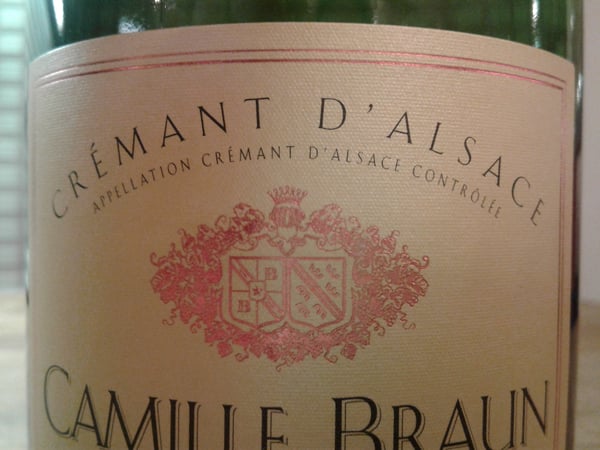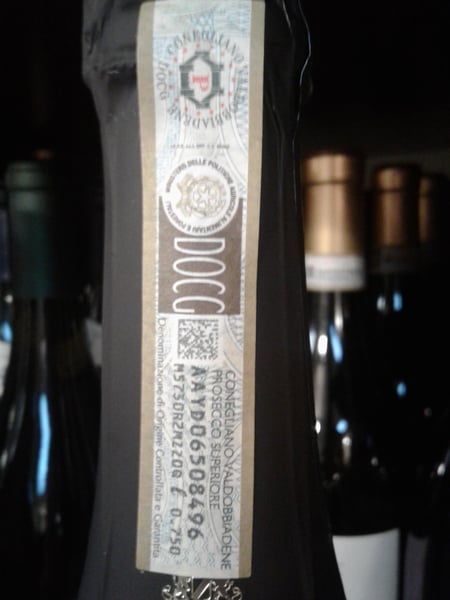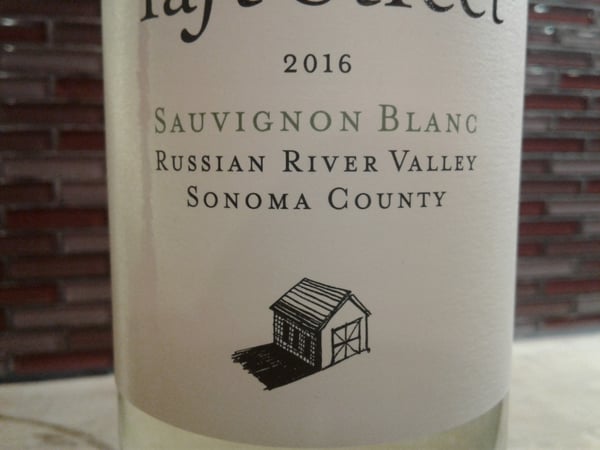I touched briefly on wine appellations in my post last month, and I want to revisit that topic because learning about appellations has really enhanced my understanding and enjoyment of wine. So, what is an appellation? An appellation is a geographically defined area that is made distinctive because it produces a unique wine experience.
 Take Champagne, for example, whose sparkling wine is so famous the region's name has become synonymous with all sparkling wine. Problems arose when other regions began marketing their bubbles as “Champagne.” Regardless of the quality of those wines, there is a distinct difference between sparking wine produced in Northern France and that produced in Catalonia. In order to preserve their reputation, the French created the Institut National des Appellations d'Origine, which oversees wine-making in France. The INAO provides, in part, a system of certification to maintain a standard of quality. So, when you're shopping for wine and see the INAO Appellation d'Origine Controlée (AOC), you know that your bottle of Champagne actually came from Champagne and not California or Spain.
Take Champagne, for example, whose sparkling wine is so famous the region's name has become synonymous with all sparkling wine. Problems arose when other regions began marketing their bubbles as “Champagne.” Regardless of the quality of those wines, there is a distinct difference between sparking wine produced in Northern France and that produced in Catalonia. In order to preserve their reputation, the French created the Institut National des Appellations d'Origine, which oversees wine-making in France. The INAO provides, in part, a system of certification to maintain a standard of quality. So, when you're shopping for wine and see the INAO Appellation d'Origine Controlée (AOC), you know that your bottle of Champagne actually came from Champagne and not California or Spain.
Hopefully this makes sense, because it's about to get more confusing. Beyond Champagne, the INAO oversees more than 300 appellations. Each of those has its own rules regarding which grapes can be planted, when they can be planted, spacing of rows, maximum yields, when they can be harvested, how they are fermented, how long they are aged, what they are being stored in while they are being aged, what they can be blended with, how they are to be bottled, what can or cannot appear on the label, and on and on.
Moving outside of France, you have completely different regulatory bodies in Italy, Spain, and the United States. You're not going to find an AOC certification on a bottle of Italian wine, instead you're looking for a DOC or DOCG. If it's a Spanish bottle, you're looking for a DO or maybe a DOCa, depending on the wine.
 Some bottles bear EU designations of Appellation d'Origine Protégée (AOP) or Protected Designation of Origin (PDO) which essentially mean the same thing, but if you don't know that, it's natural to assume they're different.
Some bottles bear EU designations of Appellation d'Origine Protégée (AOP) or Protected Designation of Origin (PDO) which essentially mean the same thing, but if you don't know that, it's natural to assume they're different.
In the U.S,, we have the American Viticulture Area (AVA) system, which treats appellations a bit differently than in Europe, but essentially seeks to perform the same function. When you see an AVA on a bottle you know that at least 85% of the grapes in that wine were grown in that region. Some AVAs are well known, such as Napa or Sonoma, but others, such as the recently established Upper Mississippi River Valley AVA (now the largest wine appellation in the world) may be completely unfamiliar.
 So, why is all of this important? Why write a blog outlining how confusing government oversight of wine production can be? Because, regardless of how complex or frustrating it may be to try to understand the appellation systems, they are there for your benefit as a consumer. What all of these certifications strive to do is enhance your enjoyment of wine. When you fall in love with a bottle, they want you to be able to understand why you love that bottle. There are centuries of trial and error that go into some bottles of Old World wine. When you make the decision to try one of these, they want to make sure you get the real thing. They take pride in their work, as they should and the last thing either of you want is some shyster telling you his mass produced, bulk grape, wine is Premier Cru Bordeaux.
So, why is all of this important? Why write a blog outlining how confusing government oversight of wine production can be? Because, regardless of how complex or frustrating it may be to try to understand the appellation systems, they are there for your benefit as a consumer. What all of these certifications strive to do is enhance your enjoyment of wine. When you fall in love with a bottle, they want you to be able to understand why you love that bottle. There are centuries of trial and error that go into some bottles of Old World wine. When you make the decision to try one of these, they want to make sure you get the real thing. They take pride in their work, as they should and the last thing either of you want is some shyster telling you his mass produced, bulk grape, wine is Premier Cru Bordeaux.
Oh, and just in case you were wondering, there IS an Appalachian Appellation!
If you'd like to try any of The Chopping Block's food friendly wines, stop by our Happy Hour on Tuesdays at Merchandise Mart from 4:00pm – 6:00pm or at our Lincoln Square location on Thursdays from 5:00pm – 7:00pm. You can check the calendar in advance to see what we're serving.
To learn more about wine, download our free Wine and Food Pairing Guide. It's the first step in your journey to vinous enlightenment!












